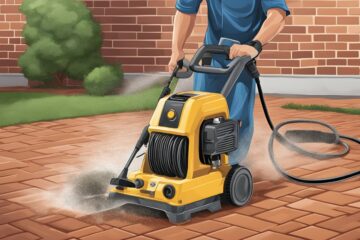Rising damp is a serious problem that can cause extensive damage to your home. Rising damp can lead to structural issues, mould growth, and even health problems if left untreated. Fortunately, you can take steps to treat rising damp and prevent further damage to your property. In this blog post, we’ll share tips on treating rising damp in walls. We hope you find this information helpful! Thanks for reading!
What is rising damp and how can you identify it in your walls?
Rising damp is a type of moisture that comes up from the ground and enters the walls of a building through its masonry. It can cause damage to internal timber, plaster and decorative features and lead to various health problems, such as asthma and allergies. Identifying rising damp within the walls of your home is relatively easy; look for patches of wet or stained plaster in low-lying areas such as skirting boards and window sills, or try putting your nose close to the wall – in both cases, an unpleasant mouldy smell will usually indicate that dampness is present. To ensure that treatment and necessary repairs are carried out properly, it’s always best to have a professional survey and analysis completed.
Why is rising damp a problem and what are the consequences of ignoring it?
Rising damp is one of the most nefarious home damage problems for unsuspecting homeowners. This happens when ground moisture or water from rain or runoff rises through the porous masonry of a building, leading to disintegration and deterioration of the building’s internal structure. Not only can this cause costly repairs and renovations to restore functionality, but it also has severe health consequences if unchecked. Rising damp can create an environment which encourages mould breeding; this type of stagnant moisture produces spores that are potentially hazardous to our breathing and wellbeing due to exposure over time. So it is essential not to ignore rising damp, as failure to do so could lead to devastating financial loss and physical damage and present ongoing severe risks to our health.
How can you treat rising damp yourself with simple DIY tips and tricks?
Rising damp can be a pesky problem, but there are some simple DIY tricks you can follow to help nip it in the bud. The first and most important thing to do is identify where the source of moisture is coming from – maybe it’s an issue with guttering, downpipes, or a cracked pipe in your walls. Once you’ve identified this, you need to address it: repair any broken pipes and make sure your gutters and downpipes are regularly cleared. It’s also worth looking into damp-proofing solutions such as sealing walls or replastering them for extra protection. Finally, keep one eye on the problem – check walls over regularly to look for signs of rising damp and be ready to repeat the process if needed. With these easy tips and tricks, you’ll soon have the upper hand in keeping rising damp at bay!
When to call in a professional to help solve your rising damp issue
When faced with a rising damp issue, it is often difficult to know whether you can successfully manage the problem or if it’s best to call in an expert. Unfortunately, this is a common struggle for homeowners and is easily understandable, considering that tackling rising damp issues requires extensive knowledge of building materials, construction processes and the environment. Most people do not have this kind of knowledge or the tools available to specialist companies like thermal imaging cameras and moisture meters. At any rate, unless you have considerable DIY experience and confidence with structural operations, it is advisable to contact a professional before trying to tackle the issue yourself – they can come armed with suitable treatments for your specific situation and also offer helpful advice on further proofing measures that may be taken.
Conclusion
In conclusion, rising damp is a genuine problem that can have significant consequences on the health of your home and its inhabitants. By identifying it in your walls using the telltale signs and taking steps to combat it with self-help solutions like adequate ventilation, insulation and waterproofing features, you can do much to create a healthy environment. However, if those efforts fail or more extensive repairs are needed to eliminate the dampness permanently, contact an experienced professional immediately. Remember: acting sooner rather than later is always the smartest way forward when it comes to rising damp.


